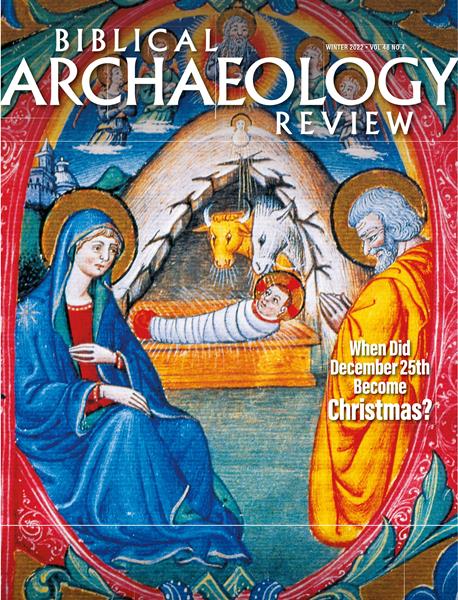Biblical Archaeology Review, Winter 2022

Features
The Mesha Stele details the victories of King Mesha of Moab over the kingdoms of Israel and Judah. It was found at Dibon, Moab’s capital, and dated to the ninth century B.C.E. The stone contains a possible reference to the “House of David” as Judah’s rulers, which seems to support King David as a historical figure. Thanks to recent photographic evidence, our authors argue that this reading can now be confirmed.
Throughout much of history, Jewish life and culture have been characterized by strict adherence to the practices and prohibitions given in the Torah. The origins of that observance, however, have remained a mystery. Consider the archaeological discoveries and ancient texts that reveal when and why ordinary Judeans first adopted the Torah as their authoritative law.
When did December 25 become the date for Christmas? An inscribed statue and several patristic manuscripts show an early association of Jesus’s birth with December 25. Investigate the early church fathers’ calendrical calculations that resulted in this date.
In ancient Judah, seal impressions stamped onto storage jars supported a centuries-long administrative system designed to collect and store agricultural products to pay the kingdom’s annual tribute to its foreign overlords. Examine the different impressions, attested from the eighth to second centuries B.C.E., that evidence this long lived, centrally organized system.
